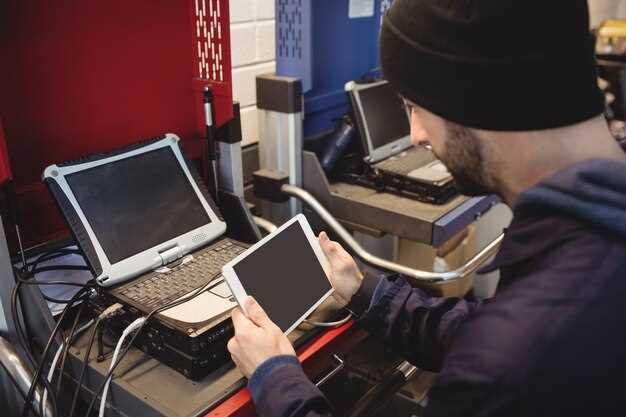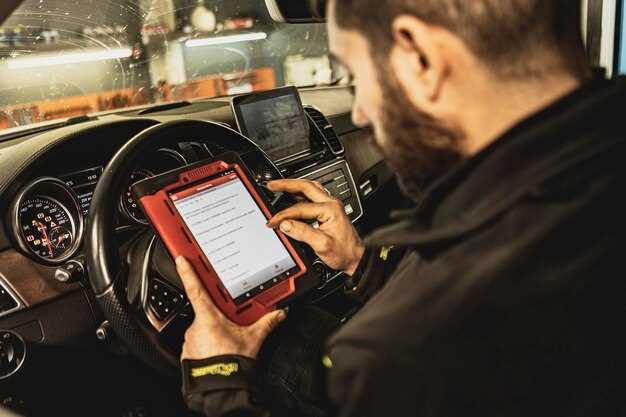
In the world of automotive repair and resale, understanding the true condition of a vehicle is paramount, particularly when it comes to salvage vehicles. These vehicles, often acquired for repairs or resale after having been declared a total loss, may conceal hidden issues that can significantly impact their value and safety. One of the most effective tools for assessing the health of a salvage vehicle is the OBD scanner.
An OBD scanner, or On-Board Diagnostics scanner, serves as a vital diagnostic instrument that interfaces with a vehicle’s computer system. By connecting the scanner to the vehicle’s OBD port, automotive professionals can retrieve critical data about the vehicle’s performance, including trouble codes and real-time parameter readings. This information is essential for identifying existing problems that may not be immediately visible during a visual inspection.
Utilizing an OBD scanner during the salvage vehicle assessment process not only helps in diagnosing mechanical issues but also provides insights into the vehicle’s history. It allows buyers and assessors to verify the integrity of the vehicle’s systems and determine whether previous damages might affect its future performance. In this article, we will delve deeper into the importance of using an OBD scanner for salvage vehicle assessments, highlighting its benefits and best practices for effective use.
Identifying Fault Codes with OBD Scanners

Using an OBD scanner is essential for diagnosing issues in salvage vehicles. These devices read and interpret diagnostic trouble codes (DTCs) generated by the vehicle’s Engine Control Unit (ECU). When a fault occurs, the ECU activates the Check Engine light and stores a corresponding code, allowing mechanics and technicians to pinpoint issues efficiently.
OBD scanners provide access to a wide range of fault codes, including specific codes that indicate problems with the engine, transmission, fuel system, and more. Each code corresponds to a particular issue, enabling targeted diagnostics. For instance, a code like P0301 signifies a misfire in cylinder one, guiding the technician to investigate that specific area.
To utilize an OBD scanner effectively, connect the device to the vehicle’s OBD-II port, usually located beneath the dashboard. Once connected, the scanner will communicate with the ECU, retrieving fault codes that can be viewed on-screen. Many scanners also offer the option to clear codes after repairs have been made, allowing for a reset of the vehicle’s system.
Understanding fault codes is crucial for accurate diagnostics. Each code comes with a standard definition, which mechanics can interpret based on their knowledge and the accompanying symptoms. Advanced scanners provide live data streams, enhancing the diagnostic process by highlighting real-time performance metrics and anomaly patterns.
In summary, identifying fault codes with OBD scanners enables efficient diagnostics in salvage vehicle assessment. By accurately determining the underlying issues, technicians can make informed decisions about repairs and ensure vehicle reliability.
Evaluating Vehicle Performance through Diagnostic Data
When assessing a salvage vehicle, utilizing an OBD scanner is crucial for evaluating the overall performance of the vehicle. The onboard diagnostics (OBD) system provides valuable insights into various performance metrics, allowing for an informed decision regarding the vehicle’s condition and potential repair needs.
The OBD scanner retrieves diagnostic trouble codes (DTCs), which indicate specific malfunctions in the vehicle’s systems. By analyzing these codes, one can pinpoint issues related to the engine, transmission, brakes, and other critical components. This diagnostic data not only reveals existing problems but can also indicate trends that might suggest future failures, providing a comprehensive view of the vehicle’s reliability.
Moreover, the scanner offers real-time data on engine performance parameters such as RPM, temperature, fuel efficiency, and throttle position. This information helps to evaluate how the vehicle performs under various conditions, allowing assessors to identify discrepancies between expected and actual performance. Such evaluations can be pivotal in determining whether the vehicle can be restored to a safe and functional state.
In addition to performance metrics, the OBD scanner can assess emissions-related data. Vehicles with significant emission-related issues may face legal and financial repercussions, making this aspect an essential part of the evaluation process. Ensuring compliance with environmental regulations will not only affect the vehicle’s future usability but also its market value after repairs.
Finally, consistent use of an OBD scanner during vehicle assessments can streamline the diagnostic process, saving time and reducing the reliance on subjective evaluations. This objective approach not only enhances the accuracy of the assessment but also instills greater confidence in prospective buyers regarding the vehicle’s overall condition.
Interpreting OBD Scanner Results for Repair Decisions

When conducting a salvage vehicle assessment, interpreting the results from an OBD scanner is crucial for making informed repair decisions. The OBD (On-Board Diagnostics) system provides real-time data about the vehicle’s engine performance and other critical components. Each diagnostic trouble code (DTC) retrieved by the scanner offers insights into specific issues that may need addressing.
Start by analyzing the codes displayed on the scanner. They typically follow a standard format, beginning with a letter indicating the system (P for powertrain, B for body, C for chassis, and U for network). The subsequent digits provide more details about the exact problem. For instance, a code P0301 indicates a misfire in cylinder one. Identifying the type of trouble code allows you to prioritize repairs based on severity and urgency.
In addition to DTCs, OBD scanners often display freeze frame data, which captures vehicle conditions at the moment a fault is detected. This information includes engine load, speed, coolant temperature, and more. Reviewing freeze frame data can help you understand the context of the problem and replicate the conditions under which the fault occurred, leading to more accurate diagnostics.
Interpreting the results also involves understanding the potential implications of each code. Some codes may indicate minor issues that are easy to fix, while others might signal significant failures that could compromise vehicle safety or function. For example, a code related to the catalytic converter might suggest the need for extensive repairs or replacement, impacting the vehicle’s overall value and safety.
Once the issues are identified, use the OBD scanner results as a guide to make data-driven repair decisions. Assess the cost-effectiveness of repairs against the vehicle’s value and your goals for the salvage. In some cases, minor repairs can restore functionality and value, while in others, the costs may exceed the benefits. Always consider performing a thorough inspection alongside the scanner data to ensure comprehensive evaluation of the vehicle.
Finally, keep in mind that ongoing maintenance and repairs may also trigger new codes over time. Regular use of an OBD scanner can facilitate preventative measures, helping to catch emerging issues before they escalate. This proactive approach can significantly impact the overall performance and longevity of the salvage vehicle.
